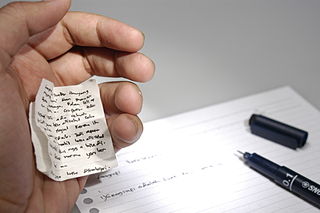
James M. Lang reports on a book about dishonesty in the first part of a three articles on cheating on the Chronicle of Higher Ed. The article and book discuss findings on cheating.
An earlier article in the Chronicle discussed a MOOC that teaches students how to cheat. Of course, this is done so that participants can better learn how to prevent cheating. I think in many cases, exams should mirror tasks that would happen in the real world, where possible. We want students to learn how to research, analyze, and draw reasonable conclusions.
In the spring of 2012, the Duke economist and behavioral theorist Dan Ariely published a trade book entitled The (Honest) Truth About Dishonesty: How We Lie to Everyone—Especially Ourselves, a fascinating account of multiple experiments in which he and a series of colleagues tested the willingness of people to cheat in a variety of situations. via Cheating Lessons, Part 1 – Do Your Job Better – The Chronicle of Higher Education.
One thing which likely does not prevent cheating is to have the students sign an “honor code upheld” paper and placing it on the exam.
While there is no discussion of technological ways to prevent cheating, I’m confident some technology will likely be mentioned in part two or three. It’s likely the mention will be something like: “Some people think that technology can prevent cheating, but it really can’t. There’s always a way around it.”
There are several tools that can be used to lessen cheating and one that I’ve had used on me is Kryterion’s Webassessor. In addition to using biometrics, they use a webcam to help proctor the exams. This recreates, to some extent, the adult presence mentioned in one of the studies.